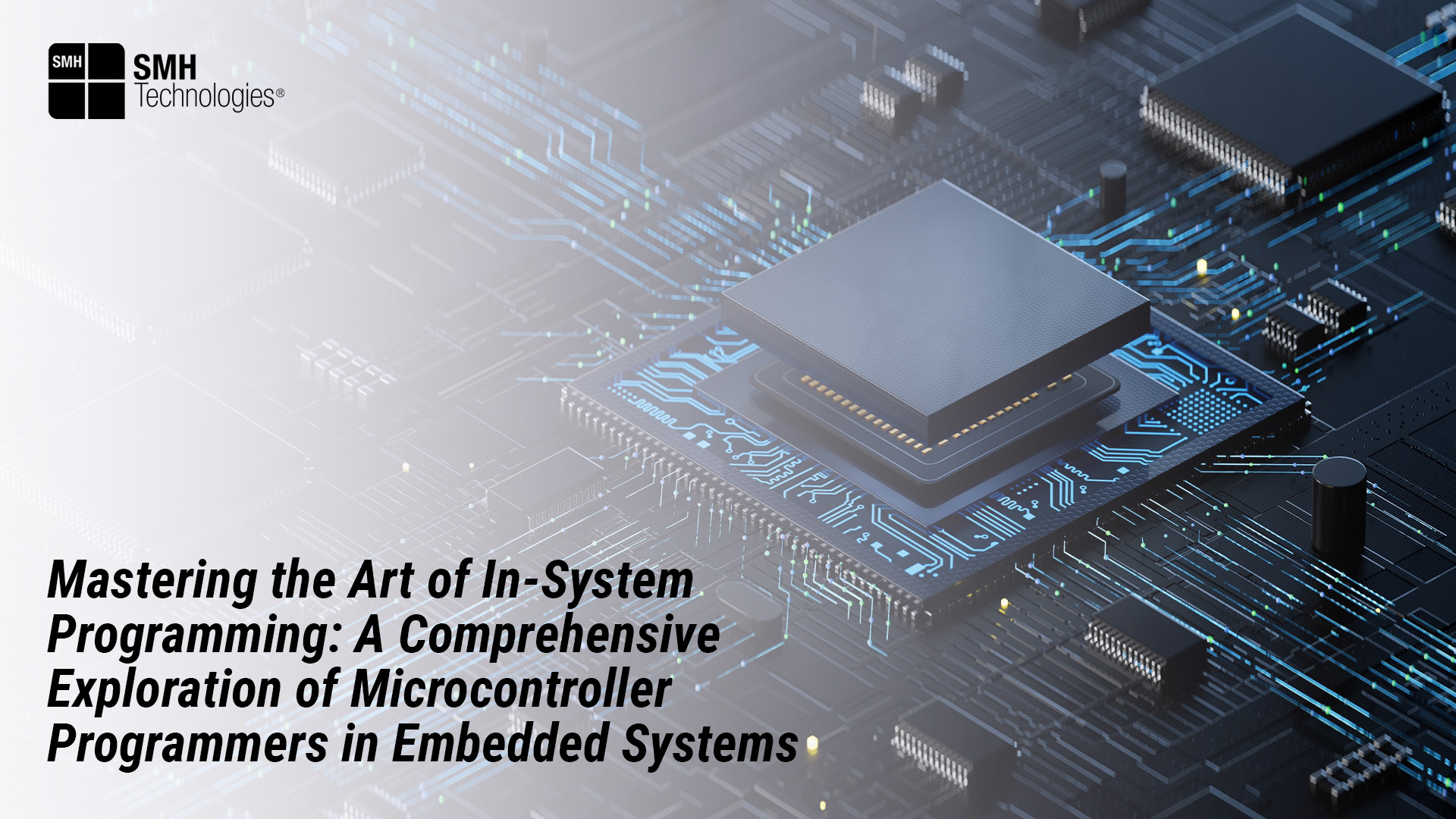Project Description
Today, we embark on an in-depth exploration of the intricate world of Microcontroller Programmers – a cornerstone of contemporary embedded systems. As we unravel the complexities of In-System Programming (ISP) solutions, our aim is to provide a comprehensive understanding of the technologies shaping the landscape of modern embedded design. With the burgeoning demand for streamlined electronics production, understanding In-System Programming is essential for any embedded system engineer.
The Evolution and Significance of In-System Programming (ISP)
Embedded systems have undergone a remarkable evolution, driven by the relentless pursuit of efficiency and flexibility. In-System Programming emerged as a pivotal solution, redefining the rules of the game by enabling the programming of microcontrollers directly within their circuits. This paradigm shift has not only slashed production costs but has also injected a newfound agility into electronic device development, accelerating time-to-market. As industries lean heavily into automation and the Internet of Things (IoT), the role of ISP in efficient device manufacturing has become more crucial than ever.
At its core, In-System Programming involves the direct programming of microcontrollers without the need for extraction from the circuit. This paradigmatic shift not only streamlined the production process but also laid the foundation for the advanced capabilities we enjoy in modern embedded systems.
Demystifying Microcontroller Programmers
1) JTAG Programmers:
The Joint Test Action Group (JTAG) standard interface stands out as a stalwart in the world of boundary scanning and debugging. JTAG programmers offer unparalleled versatility, catering to a spectrum of microcontrollers. Their ability to enable real-time debugging without disrupting the normal operation of the device makes them indispensable for engineers seeking robust solutions.
2) SPI Programmers:
Serial Peripheral Interface (SPI) programmers, characterized by their simplicity and efficiency, leverage a synchronous serial communication protocol. This makes them adept at high-speed data transfer, rendering them ideal for applications where rapid programming and data exchange are paramount.
3) I2C Programmers:
Inter-Integrated Circuit (I2C) programmers utilize a serial communication protocol suited for scenarios requiring multiple devices on the same bus. Their ability to facilitate communication between components makes them essential for applications demanding seamless connectivity.
4) UART Programmers:
Universal Asynchronous Receiver-Transmitter (UART) programmers play a vital role in scenarios where simplicity and lower data transfer rates suffice. Their versatility in facilitating serial communication in a straightforward manner makes them a preferred choice in various embedded systems.
5) SWD (Serial Wire Debug) Programmers:
SWD programmers, leveraging a two-wire protocol that combines clock and data signals, stand out for their speed and efficiency in programming and debugging microcontrollers. In the realm of microcontroller programming, SWD programmers have firmly established their place by offering a balance between speed and precision. This technology has become a cornerstone in ensuring swift and precise programming operations.
It is important to note that all of the above solutions are surely valid options for the ISP, however, all of them are limited to their own communication interface and they do not provide much versatility to the programming.
6) Universal Programmers:
Nowadays boards are becoming more and more complex and the ISP is getting more and more demanding in terms of flexibility. The new challenges that arising in this field are brought up by boards which are mounting different architectures, from microcontrollers and memories to EMMCs.
Each of them may be using different interfaces to connect and communicate: here is where universal programmers could play a decisive role because of their versatility, durability, efficiency and performances. Universal programmers are rapidly becoming the go-to solution for engineers striving for adaptability in an increasingly multifaceted electronics world.
Advantages of ISP in Embedded Systems
Temporal and Monetary Efficiency
One of the paramount advantages of In-System Programming is its ability to program microcontrollers in-circuit. This translates to a significant reduction in production time and costs, especially in scenarios where removing and reinserting components would be impractical or economically unfeasible. Large-scale manufacturing processes benefit immensely from this temporal and monetary efficiency.
Unparalleled Flexibility
ISP solutions usher in a new era of flexibility for engineers. The ability to update firmware or make changes to the code without the need for physical access to the microcontroller is invaluable. This feature proves particularly advantageous for devices deployed in remote or inaccessible locations, where traditional programming methods would be impractical.
Debugging Prowess
Microcontroller programmers, especially those supporting advanced debugging features like JTAG and SWD, empower engineers with the means to identify and rectify issues directly on the target board. Harnessing these advanced debugging capabilities is integral to meeting the high standards of contemporary embedded systems design. Real-time debugging capabilities streamline the debugging process, enhancing the overall efficiency of embedded system development.
Navigating Challenges and Considerations
Security Implications
While In-System Programming has undoubtedly reshaped the landscape of embedded systems programming, it is essential to address potential challenges. The ability to program a microcontroller in-circuit raises security considerations. Rigorous measures must be implemented to safeguard against unauthorized access and potential risks associated with the in-circuit programming capabilities. Given the proliferation of connected devices and the rise of IoT, ensuring the security of In-System Programming is paramount. We will talk about it in our next articles.
In conclusion, the universe of Microcontroller Programmers is a realm where technological intricacies seamlessly align with the demands of modern embedded systems. In-System Programming stands as a testament to the harmonious integration of efficiency, flexibility, and cost-effectiveness. As we continue to push the boundaries of innovation, the role of Microcontroller Programmers will evolve, scripting the future narrative of embedded systems.
This comprehensive exploration serves as a roadmap for engineers navigating the intricacies of embedded systems programming. Stay attuned for deeper insights into the ever-evolving technological landscape. By familiarizing oneself with the nuances of In-System Programming, engineers position themselves at the forefront of the next wave of electronics innovation.



